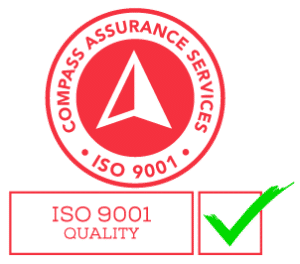The construction industry has traditionally been hands-on, requiring on-site presence to manage workers, inspect progress, and ensure deadlines are met. However, with the rapid evolution of technology, project management in construction has taken on a new form.
Digital tools are now essential for overseeing complex tasks across multiple sites without needing to be physically present. These tools streamline communication, improve collaboration, and provide real-time insights, helping to keep projects on track and within budget.
In an industry where delays and miscommunication can lead to costly setbacks, digital tools have become indispensable for modern construction management.
Tool #1: Construction Project Management Software
One of the most impactful tools for remote management in construction is project management software. These platforms centralise the entire project lifecycle, from planning and scheduling to budgeting and invoicing.
Key Features:
- Centralised Dashboards: Managers can monitor progress, track tasks, and oversee timelines from a single interface. This makes it easier to coordinate activities and ensure that each phase of the project is moving as planned.
- Scheduling and Task Management: Automated scheduling tools help keep construction teams aligned, providing real-time updates on deadlines and task assignments.
- Budgeting and Invoicing: These tools integrate financial management features, allowing project managers to monitor budgets, track expenses, and manage client invoices from within the platform.
Benefits:
- Improved Communication: Construction project management tools connect everyone involved, from contractors and subcontractors to architects and suppliers. This ensures that everyone has access to the latest information, reducing the chance of costly miscommunications.
- Real-Time Project Updates: With cloud-based access, project managers can stay updated on-site progress, even when they are off-site. This allows for quick decision-making and reduces the risk of delays.
- Efficiency and Organisation: Having all project-related information in one platform helps keep teams organised and ensures no task is overlooked, leading to better time management and fewer delays.
Tool #2: Cloud-Based Document Management Systems
Managing the extensive documentation required for construction projects can be challenging, especially for remote employees. Cloud-based document management systems offer a solution, providing secure and accessible storage from anywhere (with an internet connection) for everything from blueprints and permits to contracts and daily reports.
Key Features:
- Secure Document Storage: These platforms provide centralised, cloud-based storage that can be securely accessed by authorised team members from any location, whether on-site or in the office.
- Real-Time Collaboration: Teams can share files, collaborate on documents, make edits, and leave comments in real time, ensuring that updates are immediately visible to all.
- Version Control: Automatic version tracking helps avoid confusion by ensuring everyone is working with the most up-to-date documents.
Benefits:
- Increased Efficiency: With instant messaging and reliable access to important files from mobile devices, site managers and workers can retrieve the documents they need without having to wait for emails or physical copies. This speeds up decision-making and prevents delays.
- Improved Organisation: A well-structured cloud document system reduces the risk of losing important paperwork, while search functions make it easy to find specific files or details quickly.
- Enhanced Collaboration: Multiple stakeholders can work on the same document simultaneously, ensuring smoother collaboration between remote workers and on-site staff.
Tool #3: Workforce Management and Time-Tracking Apps
Managing labour is one of the most critical aspects of any construction project, and ensuring workers are where they need to be at the right time is a key challenge, especially when managing remotely. Workforce management and time-tracking apps help solve this problem by providing real-time visibility into workers’ locations, schedules, and productivity.
Key Features:
- GPS-Enabled Tracking: These mobile apps use GPS to provide real-time data on workers’ locations, allowing managers to track on-site attendance and ensure that teams are working in the right areas.
- Timesheets and Payroll Integration: Automatic time tracking simplifies payroll processing by integrating timesheets directly with payroll systems, reducing errors and administrative overhead.
- Shift Scheduling: These apps allow managers to create, modify, and distribute work schedules easily, ensuring the right workers are allocated to the right tasks.
Benefits:
- Increased Productivity: With real-time data on worker attendance and performance, managers can quickly identify issues, adjust workloads, and improve overall project efficiency.
- Accurate Timekeeping: By eliminating manual timesheets, these apps reduce the risk of timekeeping errors and make payroll processing faster and more accurate.
- Better Compliance and Accountability: Workforce management tools provide clear records of who was on-site and when, making it easier to comply with labour regulations and improve accountability.
Tool #4: Virtual Reality and Augmented Reality Tools
One of the most innovative technologies transforming remote construction management is Virtual and Augmented Reality (VR/AR). These tools provide immersive visualisation of construction projects, allowing managers and clients to virtually explore a site or building before, during, and after construction.
Key Features:
- 3D Visualisation: VR/AR tools create detailed, interactive 3D models of construction sites, enabling managers to inspect designs and detect potential issues before construction begins.
- Improved Collaboration: Project teams can collaborate virtually, review plans, and make adjustments in real time, better managing project updates and communications.
- Simulations for Safety and Design Testing: VR and AR allow construction teams to simulate on-site conditions, helping to identify risks, train workers on safety procedures, and test designs in a virtual environment.
Benefits:
- Enhanced Planning: By providing a realistic view of a project before breaking ground, VR/AR helps prevent design flaws and costly changes later in the construction process.
- Improved Communication with Clients: Clients can experience a virtual walkthrough of the project, helping them visualise the final product and make informed decisions about design adjustments.
- Reduced On-Site Visits: By visualising and troubleshooting remotely, managers can reduce the need for frequent on-site visits, saving time and resources.
Tool #5: Building Information Modelling Software
Building Information Modelling (BIM) is a powerful tool that has revolutionised how construction projects are planned, designed, and managed. By creating a digital representation of the physical and functional aspects of a building, BIM allows all stakeholders to collaborate on a single platform, ensuring that everyone involved in the project is working from the same up-to-date data.
Key Features:
- 3D Modelling and Visualisation: BIM software provides detailed 3D models of buildings, showing not only the structure but also critical systems such as plumbing, electrical, and HVAC.
- Data Integration: BIM integrates all aspects of a construction project, from design and materials to costs and timelines, giving managers a comprehensive overview of every element.
- Collaboration Tools: Teams from various disciplines—architects, engineers, contractors—can work together in a shared BIM model, ensuring that changes made by one team are immediately visible to others.
Benefits:
- Reduced Errors and Rework: By allowing for thorough planning and analysis before construction begins, BIM helps identify and resolve potential issues early, reducing costly rework on-site.
- Improved Collaboration: BIM serves as a central source of truth for all project data, fostering better collaboration between teams and ensuring that everyone has access to the most accurate and current information.
- Better Project Control: BIM’s ability to integrate data such as materials, timelines, and costs gives managers full control over the project’s progress, helping to keep it on schedule and within budget.
Improve Your Remote Management with Industry Experts
Digital tools are greatly enhancing project efficiency and helping construction teams manage remote sites much more effectively, keeping everyone connected and informed in real time. As more businesses adopt remote management tools, the construction industry will continue to see improvements in safety, productivity, and cost management.
Steadfast Solutions is a specialised provider of IT services and technology solutions for construction companies. Our expert team can optimise your construction projects and remote management with the right digital tools to improve communication, collaboration, and visibility across every aspect of your projects.




